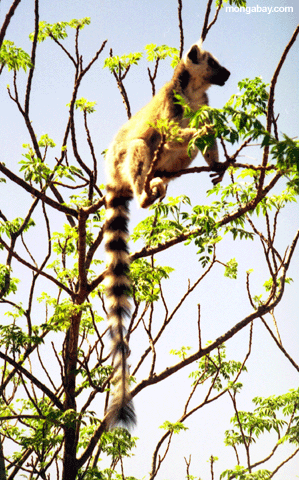|
|
|
|
 Ringtail lemur, Madagascar
Ringtail lemur, Madagascar
|
Zoos Fund Low Cost Conservation Projects
Shoestring Projects to Save Threatened Species Allow Even Small Zoos to Play Role
By JOEL MILLMAN
Staff Reporter of THE WALL STREET JOURNAL
June 16, 2004; Page B1
On June 16, 2004 The Wall Street Journal featured on article on the relatively low cost of some conservation projects overseas. The article focused on a penguin conservation project in Peru which is funded in part by the change donated by zoo patrons: "You'd be surprised what $25,000 a year can buy in the Third World," says Mike Macek, bird curator for the St. Louis Zoo, which teamed up with Chicago's Brookfield Zoo and the Philadelphia Zoo to fund the penguin sitters. "In some cases you might be able to save an entire species.".
Other examples from the article:
Madagascar Fauna group
The St. Louis Zoo founded the Madagascar Fauna group, where 40 zoos co-own a multimillion-dollar program. With as little as $5,000 even a small zoo can buy "membership" in the Fauna Group. The smaller institutions can do cross-marketing with larger zoos, and claim ownership of a specific program for very little outlay.
How little? The director of Madagascar's Ivoloina Zoo Education Programs earns just $178 a month. A lemur keeper at the zoo is paid $66 a month, while a conservation agent at Betampona Natural Reserve receives $81 a month.
"A zoo in Illinois can throw in $5,000 and buy a share in the operation," explains Eric Miller, the zoo's director of conservation. "For $5,000 you can put a lot of people on the ground."
Virunga National Park
In the 1970s, the society [Wildlife Conservation Society] made a grant of under $10,000 to start an ecotourism project near Rwanda's Virunga National Park, home of the endangered mountain gorilla. Today the project is self-sustaining, and the gorillas, about 700 strong, are making a comeback. "That cost trivial amounts of money," Dr. Sanderson says. "And we no longer have to fund it at all."
The rest of this article is available to Wall Street Journal subscribers. Because this is a subscription based article I can't post the full text here.
Copyright 2004, The Wall Street Journal
CONTENT COPYRIGHT the Wall Street Journal. THIS CONTENT IS INTENDED SOLELY FOR EDUCATIONAL PURPOSES.
mongabay.com users agree to the following as a condition for use of this material:
This site contains copyrighted material the use of which has not always been authorized by the copyright owner. Such material is made available in an effort to advance understanding of environmental issues. This constitutes 'fair use' of any such copyrighted material as provided for in section 107 of the US Copyright Law. In accordance with Title 17 U.S.C. Section 107, the material on this site is distributed without profit. If you wish to use copyrighted material from this site for purposes of your own that go beyond 'fair use', you must obtain permission from the copyright owner.
If you are the copyright owner and would like this content removed from mongabay.com, please contact me.
|